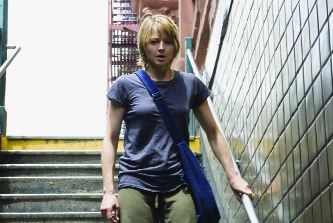Unglued

Neil Jordan’s The Brave One has a lacerating opening section. Erica Bain (Jodie Foster) is a New York disc jockey who dedicates her radio show to the neglected or vanishing splendors of the city she adores. One evening she and her fiancé (Naveen Andrews, of TV’s Lost) are mugged while walking their dog in Central Park; he’s killed and she winds up in a coma. When she wakes up, she undergoes a period of agoraphobia and afterward keeps a protective psychological shield around herself whenever she ventures forth. Another character, observing her on a subway, says she’s “locked down.”
Working with the legendary photographer Philippe Rousselot, Jordan brilliantly captures Erica’s experience of New York both before and after the mugging. The assault scene itself, edited by Tony Lawson to underscore her entrapment and disorientation rather than the violence, is as fine a piece of filmmaking as you’re likely to see this year. Foster, who can be a curiously distanced performer, gets deep inside this woman’s skin. (Moreover, in her scenes with Andrews she shows a sensuality that’s unlike anything she’s demonstrated before.)
But then the movie leaps off a cliff. Erica tries to buy a gun without a permit. A man who overhears her conversation with the gun shop clerk offers to obtain her a weapon for a thousand bucks, then he leads her into an alley—and she follows. Have the filmmakers forgotten that she feels unsafe even on a crowded Manhattan street?
Erica gets the firearm. From that point the movie skates on sheer sensationalism, and the plot abandons any semblance of plausibility. As she walks into a bodega at night, Erica sees the woman behind the counter gunned down and she shoots the assailant in self-defense. Then she takes on a trio of punks on the subway. Suddenly Erica is an avenging angel. The scum of New York conveniently cross her path. She can’t leave her apartment without bumping up against some sociopath in full-attack mode.
Meanwhile the NYPD is apparently economizing on personnel: the same unlucky pair of cops (Terrence Howard and Nicky Katt) track every homicide that Erica perpetrates. That’s another convenience: the filmmakers want to set up one of the detectives, whom Erica interviews for her radio program, as half foil, half alter ego for Erica.
Perhaps the only good vigilante picture ever made is Martin Scorsese’s Taxi Driver (1976). That movie made Foster famous at age 12 for playing Iris, the prostitute whom Robert De Niro, as Travis Bickle, rescues by turning a gun on her pimp and a couple of other creeps who get in his way. Bickle becomes a hero, Bernard Goetz style, but the viewer knows what his champions don’t: that his attack on Iris’s exploiters quelled a paranoid rage that was simmering for months and that was turned on the villains only when he was prevented from assassinating his intended target, a politician.
Vigilante movies asks us to trade in our moral qualms about vengeance for the vicarious pleasure of seeing violent punks driven to their knees. The Brave One tries to finesse this emotional manipulation by depicting Erica as a tragic figure—her killings don’t help her sleep better at night or feel at home on New York’s streets. But the haunted nature of the character doesn’t mitigate the distastefulness of the narrative. In the end, The Brave One works on audiences in much the same way a movie like Death Wish does.
Jordan has too much savvy to render the story with grim humorlessness. Katt reads his lines with a mordant wryness, and John Magaro, playing as a teenager who is robbed on the subway before Erica punishes the knife-wielding thieves, is effective at displaying insolence and incredulousness. They provide a few moments’ respite in a movie that would be simply vile if it weren’t ridiculous.





